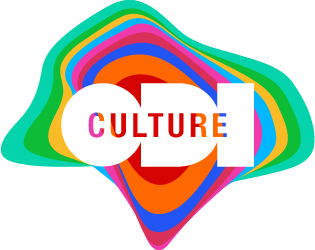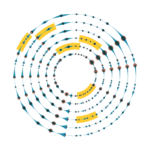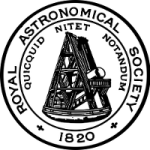
In October 2012, as CEO of the newly-created Open Data Institute, the first work I commissioned was … art.
Why art?
For me, artists help to shape questions before we’ve worked out that questions are needed. They might not be able to articulate a precise question, but often indicate a shape of something emergent. Over the past 20 years, when I’ve been trying to understand what shape the future might take, what areas might be interesting, or what thoughts are converging to create something new, I look to art, collaborate with artists and help make works. Whether writing music, working with collectives such as AmbientTV, or with art-scientists at radio telescopes, these crossovers have been a continuous part of my own development, and deeply influential in the development of my ‘professional’ career (although I’m still not sure if there’s a boundary, or where it might be).
When creating the ODI I knew we would have to challenge perceptions (both within and outside our own community). We would have to work out what questions might exist, and what things might be possible. I also felt strongly that ‘culture’ was usually left to ‘later’, rather than being the reason you do things in the first place. To not express this culture through art seemed ridiculous.
Not that this didn’t raise the eyebrows of some of the new team, and indeed the board, and Number 10, at first. But the outcomes exceeded everyone’s expectations. We captured people’s imaginations. We transformed an invisible ‘geeky’ thing (data) into living, kinetic, organic, relevant, challenging and provocative conversations.
The nine works in the first collection created a remarkable linear narrative (from laughter to profound reflection), installed in our global headquarters, and set a high bar for future commissions. They changed the way politicians related to data, they encouraged corporate partners to sign up immediately, they stimulated debate in the team and in visiting groups, and created conversations inside and outside of the building: the Washington Post came to film the artworks as their lead feature when introducing the ODI. Visual communication in action.
Our second programme was a call for curators and included partnerships with FutureEverything and Lighthouse. It covered everything from surveillance to knitting.
Working with The Space (BBC + Arts Council) we also helped to commission original data-driven work, http://www.weneedus.org, which was presented at TEDglobal in Brazil, UN event in Columbia, Somerset House, and many other events.
Our third year saw the commissioning of artists in residence. Our fourth, the commissioning of a musician in residence.
2012 foreword
http://theodi.org/data-as-culture-2012
‘Data as Culture’ is reflective of our time.
The first public work I initiated, just 12 days into my new role (and on Ada Lovelace day), was a call for data-driven artwork that would sit in our new Shoreditch office.
That we received over 80 submissions in 2 weeks from over 20 countries was an amazing display of the emerging global consciousness.
As nations, organisations, and individuals from around the world embrace and release more and more open (addressable, structured, accountable, continuous) data, we can see that we are at the beginning of a new web – much as people asked in the early 90s “why should I have a website?”, today’s question is “why should I have open data?”. The answers are as difficult to enumerate, but no less profound.
In an age of data-driven decision-making, we are led to believe that data represents truth. Simultaneously our collective data shadows are revealing, in real-time, details about our personal lives, social groups, corporate interactions, and civic society.
Combined, these trends open many, many questions: whose data are we trusting? Who wrote the algorithm? Who wrote the code? What are the unexpected consequences of combining different data? If our personal, business, and political decisions are shaped by these data, is there dogma in the code?
Equally, our maker culture is re-emerging, as evidenced not only in events around the world, but in the art commissions themselves: only one of the nine works is screen-based. This concept of the web ‘breaking through the glass’ and becoming part of our physical world could not be more timely, and significant, to the work of the Open Data Institute: to catalyse the evolution of an open data culture that creates economic, environmental, and social value.
I would like to thank MzTEK for creating and running the commission, all those who submitted, and those who were successful: we will draw inspiration from your work. It is truly world-class.
Gavin Starks BSc MMus FRSA
CEO, ODI
November 2012
2014 brochure
http://theodi.org/data-as-culture-2014
The Data as Culture programme raises questions about the concepts and practicalities of open data. It explores the wider implication of the culture of open data on culture itself, to challenge our understanding of what data is, and how it may affect and reflect our lives.
Running the first commission as the inaugural ODI project in 2012 was a bold decision. We have been delighted with the outcomes: reaching over 100,000 people internationally, with features at TED.com, in the Wall Street Journal, the Churchill Room in Whitehall, and in dozens of presentations from Taiwan to Washington DC. Over 3,000 visitors to our UK office experienced the works directly, and the feedback has been overwhelmingly positive.
The first commission was an open call for artists which we curated with MzTEK.
This year we ran an open call for curators to expand our shared vision for open data culture. Shiri Shalmy had recently curated the exhibition Data at Contemporary Art Society, London and had a very strong and prescient concept for the second exhibition which centred around data ownership and access, public and private. Works for Data as Culture were selected for their physical presence and the exchange they enable between artist, artwork and audience.
This commission explores our relationship with surveillance, privacy, and personal data, taking a critical and sometimes comedic look at the power of open data. Works include pneumatic contraptions, satellite imagery, data collection performances, and knitted data discrepancies.
Data as Culture is for everyone. We want to ensure conversations about open data expand beyond specialist communities and through to the general public. Using data as a material increases awareness of what data is, how it can be used creatively, how it can inspire, encourage play and lateral thinking, and help people share stories and experiences.
To broaden our reach we have partnered with Lighthouse, a digital culture agency and gallery in Brighton, and FutureEverything, based in Manchester, who are critically engaged in technology, and run one of the longest standing media arts festivals in the world. The works will be exhibited across these locations and in London, at the ODI itself.
The Data as Culture programme will continue to develop relationships with arts organisations to expand the programme nationally and internationally, for artists and audiences – for everyone – everywhere.
Julie Freeman, Art Associate, ODI
Gavin Starks, CEO, ODI
March 2014
2015 artists in residence
http://theodi.org/news/natasha-caruana-joins-odi
http://theodi.org/news/thomson-craighead-natasha-caruana-art-odi-data-as-culture-programme
2016 musician in residence
http://theodi.org/news/alex-mclean-chosen-as-the-first-open-data-institute-sound-artist-in-residence





